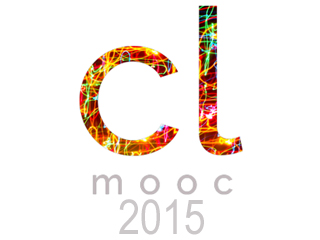For this Make Cycle, we invite you to consider how the media we compose within (like print, sound, still and moving image, or objects) influence how we communicate and interpret. In this Make Cycle, we will mediate and re-mediate and reflect on how the affordances of different media impact our choices, processes, and meanings.
Ryan moved from image to words in this remediation:

Remediation – as we’ll be thinking about it here – is unrelated to another use of the term in education: we are not talking about “remediating kids” as in “remedy”-ing them. Here, the focus is on media, and ways in which moving from one medium to another changes what we are able to communicate and how we are able to do so.
The processes of mediation and remediation are occurring all around us. When we add content to a Facebook page, personal journal, or scrapbook, we are mediating ourselves and experiences. In doing so, we work within (and sometimes push back against) the constraints of the medium. Every medium we compose within offers affordances that we can take advantage of: a photograph captures color in a way that text cannot, but text can convey conversation that happened at the moment of the photograph. Similarly, music offers the tools of pitch, rhythm, and tone color; so while a sculpture may be inspired by a song, it has to communicate differently because it works with line, texture, and dimension. When we move from one medium to another, we can notice the affordances and constraints that each medium offers (for and against) our purposes.
Make with Me!
For this Make Cycle, we would love for you to choose something (an artifact, a story, a picture, a video clip, an anything) and over the course of the week remediate it through one or more different media. A remediation cycle might start as a drawing, move to a video, then to a cross stitched text, then to a webpage. Another cycle might begin with a blog post, move to a garden sculpture, become a gif, and result in a speech. You might even may choose to browse the Makes from the first week’s cycle and remediate an introduction someone posted, with proper attribution of course!
The media you choose to work with are up to you. We hope that you will be inspired to explore at least one unfamiliar medium to prompt new understanding about what it means to translate a message from one medium to another. If you’re looking for a place to start, consider remediating your introductory artifact from the first Make Cycle. Over the course of the Make Cycle, we’ll consider how remediation draws attention to our composing processes and our identities as composers.
Check out these resources — How can we mediate and remediate?

Not sure where to start? During last week’s Make, Karla found inspiration for remediation by taking an everyday image in the medium of digital photography (which strives to make the medium immediate, or invisible) and using some of the photo editing tools below to hypermediate, or make the presence of a mediation extremely visible. The proliferation of rainbow-enhanced profile pictures on social media sites last week speaks to the same idea, and particularly reminds us how we use the affordances of a digital medium to convey aspects of our identities.
Multimedia
Photos/Images
Word Clouds
Videos
Comic Strip Creators
Sound Resources
Please share your examples of how you remediated here or in any of our online community spaces!



